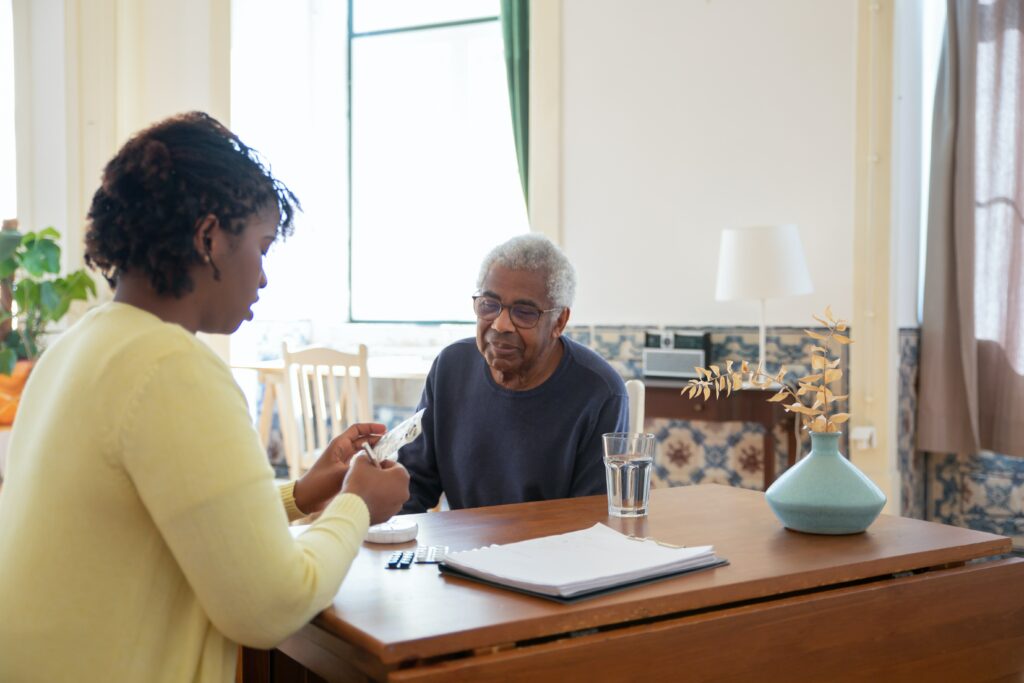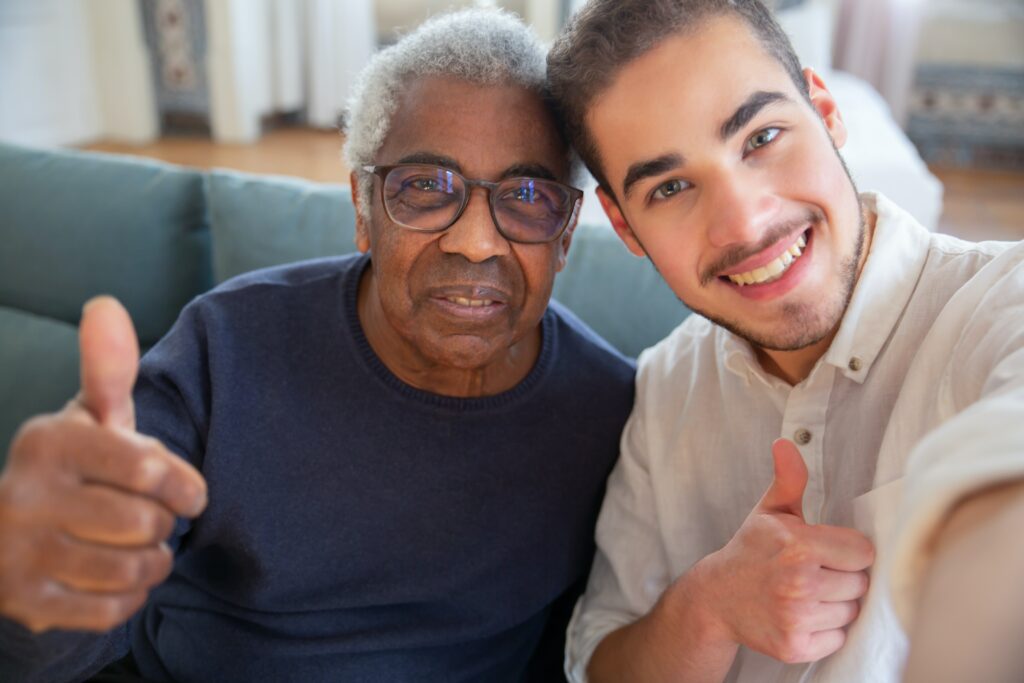Caregiving For A Senior: An Overview
Adult children, grandchildren, and even spouses may step up to assume the crucial job of the caregiver as loved ones age and can no longer live as independently as they once could.
Senior caregiving can be difficult at times, but it can also be a very fulfilling experience for all involved, especially if the caregiver is ready to support the health and safety requirements of their loved ones and is prepared to have difficult conversations and make difficult decisions when necessary.
Suppose you still need to figure out this as a potential family caregiver or an older adult. In that case, this article will help you get started by guiding you through the basics of caregiving, how to choose one, or the resources that may be available to you.
What Is A Caregiver?
According to John Hopkins Medicine, caregivers assist patients with personal care, medical chores, and daily living activities (ADLs). Seniors commonly receive care in their homes, but a caregiver can also go into a long-term care facility to provide care. The person being supported typically needs short-term or long-term care due to an injury, disease, or disability.
Caregiver options include unpaid family members, hired family members, home health aides, companions, or other paid professionals. The caregiver may occasionally be a member of your church or a reliable neighbor. Perhaps you or a loved one is already taking care of someone.
You may be a caregiver if you’ve helped someone in need with the following:
- Dressing, bathing, and grooming
- Transportation to the grocery store and medical appointments
- Housework and yard work
- Meal prep
- Budgeting, taxes, and managing money
The Importance Of Senior Caregiving
Whether it is a family member or a paid caregiver that provides the support, caregiving is essential for the well-being of older adults in our communities. Having a caregiver to care for an older loved one is also important because,
- Millions of elderly and disabled individuals rely on unpaid carers to help them maintain their independence, according to the Centers For Disease Control and Prevention(CDC). People who have chronic illnesses also require additional care and supervision. These older adults must receive the affection and support they require from family members or paid caregivers. Caregiving can be accomplished by helping the elderly with numerous duties that require assistance.
- Making meals for the senior, family, friends, and paid caregivers can offer the older adult physical help. Meals should be made taking into account the senior’s nutritional needs. The elderly can thus take pleasure in the meal with increased nutritious value for their health.
- For older adults who are too physically feeble to do it themselves, caregivers can demonstrate caring by performing household duties and cleaning the home. As a result, the older adult will live in a sanitary and secure setting.
- Older adults who are disorganized can benefit from caregiver assistance by having their medical appointments and schedules managed. By doing this, you can be sure the senior won’t forget to take their medication or take too much of it. Additionally, it assures that senior citizens’ well-being is prioritized. The senior’s quality of life is enhanced and made easier with competent caregiving.
The Benefits Of Caregiving To the Recipient And The Giver
CDC stated the following benefits caregiving has to its recipients, like older adults:
- Maintain their independence and standard of living.
- Avoid living with others (institutionalization).
- Lessen their depression
- Better self-manage their chronic illnesses.
According to the American Psychological Association, caregiving has positive aspects, even for the caregiver.
- Their sense of fulfillment and self-assurance grows as a result of assisting others.
- Create or expand social networks of caregiver-related friendships.
- Feel necessary and helpful.
- Acquire new knowledge and abilities.
- They believe that by modeling caregiving for their children, they are passing on a tradition of caring and increasing the likelihood that they will receive care from their children in the future.
- Satisfaction from seeing their loved one receiving top-notch treatment.
Snapshot of Caregiving in the U.S.
(Note: I suggest turning the stats below into an infographic.)
- Most caregivers—58%—are female.
- At least 20 hours of care are given each week by about one-third of caregivers.
- Typically, caregivers pick up skills on the job and lack formal training.
- 79% of carers provide care for persons 50 and above, and 76% of care recipients are seniors.
- Within the next two years, one in 6 non-caregivers anticipates becoming a caregiver.
- More people are taking care of others, from 43.5 million in 2015 to nearly 53 million or more than 1 in 5 Americans in 2020.
- 2 in 10 employed caregivers had to quit their jobs, and 4 in 10 had to cut back on their work hours to care for a loved one.
- Nearly 80% of caregivers say they cover ordinary costs for people they care for out of their own pockets.
- Approximately 2 in 5 caregivers have at least two chronic diseases.
Getting Started
Providing care to seniors is even more intimidating and demanding, especially with the types of challenges that the elderly might face. Hence, being equipped with the right knowledge and prepared for the duties and realities of caring for an older adult is very important for both the recipient and the giver of care.
If you’re thinking of becoming a senior caregiver, here are some important things you need to know to prepare yourself for the task physically, mentally, and emotionally.
Knowing The Basics Of Senior Caregiving
Before carrying on the task of being a senior caregiver or choosing a caregiver for yourself as a senior, you must be aware of the basics of caregiving, from when to consider one or the signs you or an older loved one need caregiving, the responsibilities that caregivers have, and the challenges that the caregiver or the recipient usually encounters.
Determining Your Senior Caregiving Options
After learning about the basics of caregiving, the next thing you or a family caregiver need to know is the options available. Learning about your options is important since caregiving can be very challenging, and there might be times when a family caregiver eventually needs help. Hence, knowing other options like professional help is very important.
It will also help you determine what type of care or help you or your parents may need or receive.
Choosing A Caregiver For Your Loved Ones
If you’ve finally determined the best caregiving option, the next step involves choosing the best caregiver for you or your loved one. If a senior family member prefers a family caregiver, who do you think can fulfill the duties well, or if you think they need a professional caregiver, how can you choose the perfect one for your family? And what characteristics should you be looking for?
Those are just some things you need to ask yourself when choosing the ideal caregiver. It comes with a lot of research, comparison, and asking of questions.
Making Preparations As A Family Caregiver
When caring for an older loved one, their first choice or preferred caregiver is a family member. 41.8 million Americans provided unpaid care to an adult over the age of 50 in 2020.
Taking care of an older loved one is also a job that requires fulfilling many tasks that can be physically and mentally draining for the caregiver. Hence, family caregivers must be aware of these tasks and know how to prepare for when they take over caregiving responsibilities and how to take care of themselves in the process.
Senior Caregiving Resources
Another important thing you need to know is where and how you’ll cover the costs associated with having a caregiver.
Resources that provide information about caregiving, including tips, guides, and useful articles, are also important to caregiving to update your knowledge and improve the care you give to your loved ones.
Resources for Family Caregivers:
Here’s a glimpse of resources available to support caregivers.
Many apps and trackers can also help make caregiving life easier, and the list is growing.
Here are five top caregiving apps:
- CareZone
- CaringBridge
- RxmindMe and Medisafe
- Lots of Helping Hands
Bottomline
Caregiving does not only focus on an older adult’s physical needs. It includes emotional support as well. If you put yourself in the shoes of the old, you can comprehend the mental and emotional difficulties associated with aging. Because of this, those providing care for the elderly should encourage and praise them. The experiences of older people are invaluable, and their knowledge is priceless. When the elderly speak, demonstrate empathy for them, and they will trust you. When the elderly perceive you as reliable, communication becomes easy and enjoyable.
With these being said, it can be concluded that caregiving is a challenging job that involves a lot of crucial tasks. Hence, being fully equipped with the right knowledge and prepared both mentally and physically is very important to fulfill this job successfully.
FAQs
What’s the biggest mistake most beginning caregivers make?
According to Sherri Snelling – founder and CEO of Caregiving Club and former chairman of the National Alliance for Caregiving, lack of planning and neglect of the caregiver’s health and wellness needs are the biggest mistakes that beginning caregivers usually make.
Is it possible to be a “long-distance caregiver” if you can’t move near your loved one?
Yes, it’s possible. According to Caregiver Statistics, 3-6 million Americans care for a family member at a distance of 450 miles or more.
Does Medicare Pay for a Caregiver?
Medicare covers caregivers. Beneficiaries must, however, fulfill specific requirements to be qualified for in-home medical care coverage.






